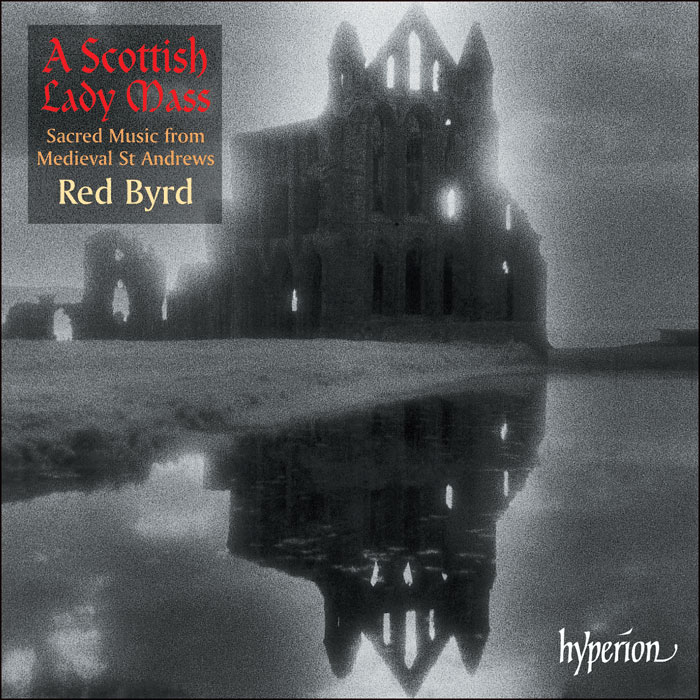Logowanie
Mikołaj - ten to ma gest!
Miles Davis, Horace Silver, Jay Jay Johnson, Percy Heath, Kenny Clarke, Lucky Thompson
Walkin'
20bit K2Super Coding - ale jak to brzmi!
Kasety magnetofonowe
Winylowy niezbędnik
ClearAudio
Double Matrix Professional - Sonic
najbardziej inteligentna i skuteczna pralka do płyt winylowych wszelkiego typu - całkowicie automatyczna
ANONYMUS, Yorvox, Red Byrd
A Scottish Lady Mass
- Scottish Lady Mass
- 1 Movement 01: Introit. Gaudeamus omnes [2'38]
- 2 Movement 02: Kyrie. Rex, virginum amator [4'26]
- 3 Movement 03: Gloria. Per precem [5'36]
- 4 Movement 04: Gradual. Propter veritatem [2'55]
- 5 Movement 05: Alleluya. Ave Maria gratia plena [3'44]
- 6 Movement 06: Alleluya. Virga florem germinavit [3'59]
- 7 Movement 07: Sequence. Missus Gabriel de celis [6'22]
- 8 Movement 08: Sequence. Hodierne lux diei [5'13]
- 9 Movement 09: Offertory. O vere beata sublimis [2'50]
- 10 Movement 10: Sanctus. Mater mitis [3'57]
- 11 Movement 11: Sanctus. Christe ierarchia [7'52]
- 12 Movement 12: Sanctus. Voce vita [5'44]
- 13 Movement 13: Agnus Dei. Archetipi mundi [4'57]
- 14 Movement 14: Agnus Dei. Factus homo [3'27]
- 15 Movement 15: Communion. Principes persecuti sunt [1'41]
- Yorvox
- Red Byrd - conductor
- ANONYMUS
At the centre of what the Scottish Tourist Board likes today to call the ‘Kingdom of Fife’ is the town of St Andrews. Now famed as much for its golf courses as for the striking location of the cathedral and Bishop’s castle, in the Middle Ages it was a city at the centre of the diocese that extended from the Tay to the Tweed. The early ecclesiastic inhabitants of St Andrews were loosely affiliated to Rome, and there were strong links with the Continental mainland, with the bishops almost exclusively coming from Norman families. It should therefore come as no surprise to find that St Andrews is the original home of a manuscript of polyphonic music whose contents originated in Paris. But what is surprising is the very nature of the music to be found in the pages of this manuscript. Liturgical idiosyncrasies abound as local musicians infuse the standard ‘Parisian’ repertory with references to their own Saint Andrew, and the musical idiom finds itself stripped of many of the obfuscating intricacies beloved of Continental contemporaries, leaving a style which is more direct and – it could be argued – more accessible to the modern ear. Although not a liturgical reconstruction of a Lady Mass in St Andrews around 1230 or so, the repertory on this disc well reflects the liturgical inclusiveness of the musical culture that the cathedral engendered. ‘Rex, virginum amator’, a troped Kyrie, is followed by the troped Gloria ‘Per precem’. ‘Missus Gabriel’ and ‘Hodierne lux’ are Sequences, and further troped items are the Sanctus settings ‘Mater mitis’ and ‘Voce vita’ and the Agnus Dei ‘Factus homo’. This recording also includes two monophonic troped items, ‘Christe ierarchia’ and ‘Archetipi mundi’ which give a sense of the intellectual hothouse that the cathedral and its environs must have represented: the texts of both are stuffed full of subtle allusion and display a learnedness that extends to Greek. ---------------------------------------- 'The listener is left marvelling at the ingenuity and imagination that produced such an intriguing wealth of rhythmic, harmonic and textural effects from the interplay of just two voices. Red Byrd's performances convincingly recreate this distant sound-world, as well as conveying the excitement with which musicians must have explored the thrilling possibilities opened up by the idea of having two notes sounding simultaneously … an immensely rewarding disc...' (The Daily Telegraph) 'In the hands of John Potter and Richard Wistreich, the two singers who constitute Red Byrd, the music is beguiling. It's surprisingly varied, ranging from pieces conceived as note-against-note, two-part polyphony to the extraordinarily ornate Sanctus Christe ierarchia, one of the two Parisian pieces included for the sake of contrast' (Sunday Times) 'Written mostly for two voices in a stark, direct style, Red Byrd's austere performances project a wonderfully convincing harmonic picture of sacred music from the medieval Kingdom of Fife … These performances, with the skilled choral contributions of YORVOX, a York University vocal ensemble, offer something new at every listening' (Sunday Herald) 'In bringing this repertory to life in so convincing a manner, they [Red Byrd] allow the listener to share in the beauty of polyphony coming into a period of rich blossom. That they have done so with such consummate artistry places us all in their debt' (Opera Today, USA) 'Recorded in an atmospherically resonant acoustic, the singing is throaty rather than floaty, with just enough guttural emphasis to sound plausibly monkish' (International Record Review) 'beautifully performed and intelligently recorded' (BBC Music Magazine) 'a first-rate addition for any collection … Do not hesitate to acquire this, and put in a good word for more of the same' (Fanfare, USA) 'What impresses most in Red Byrd's approach is the way the clear rhythmicization of the musical phrases is yet so independent of any sense of regular, restrictive beat; this fluidity does not, however, prevent a formidably accurate sense of co-ordination' (Early Music, OUP Journal)































